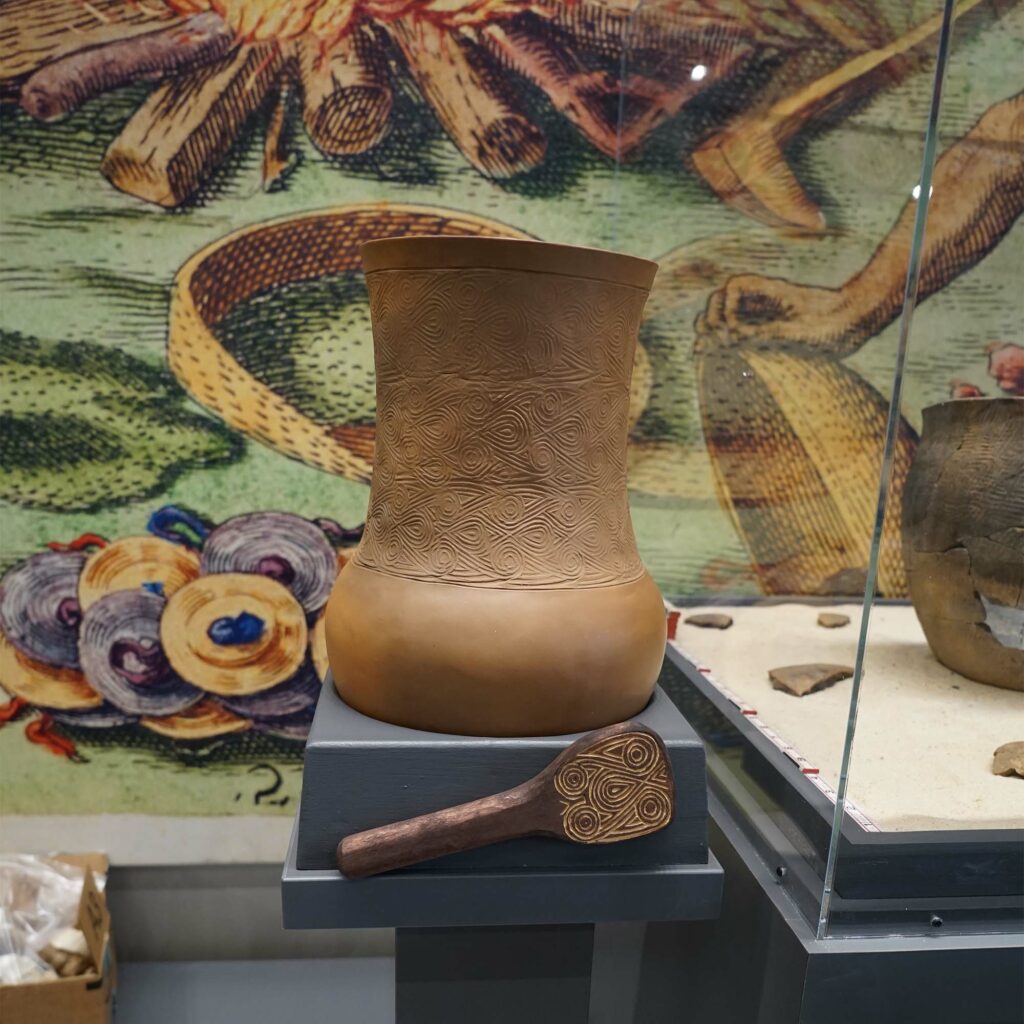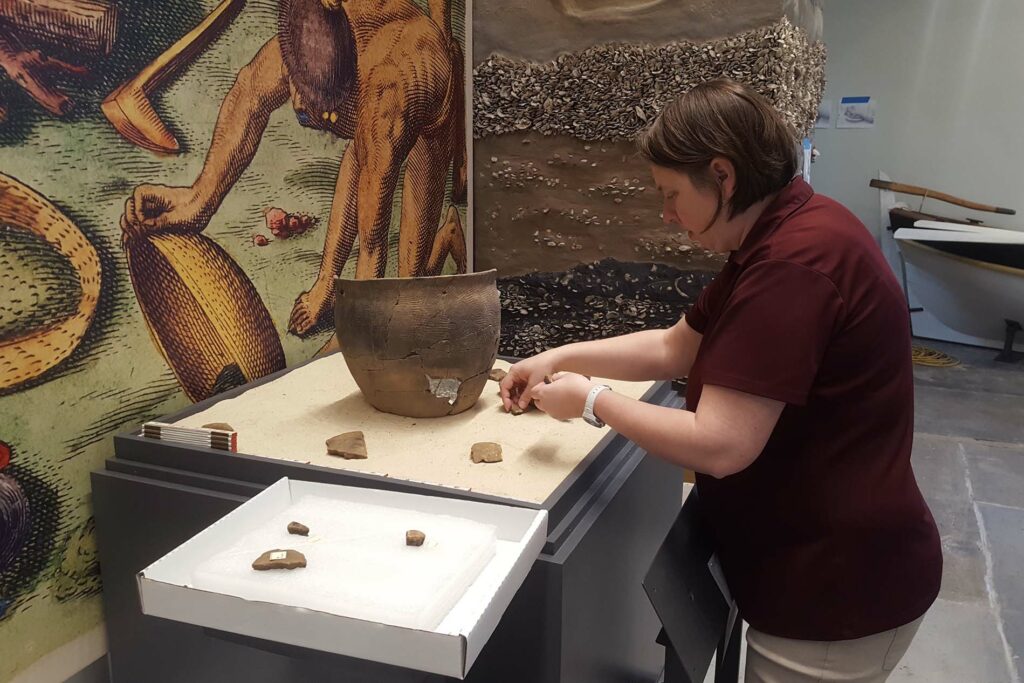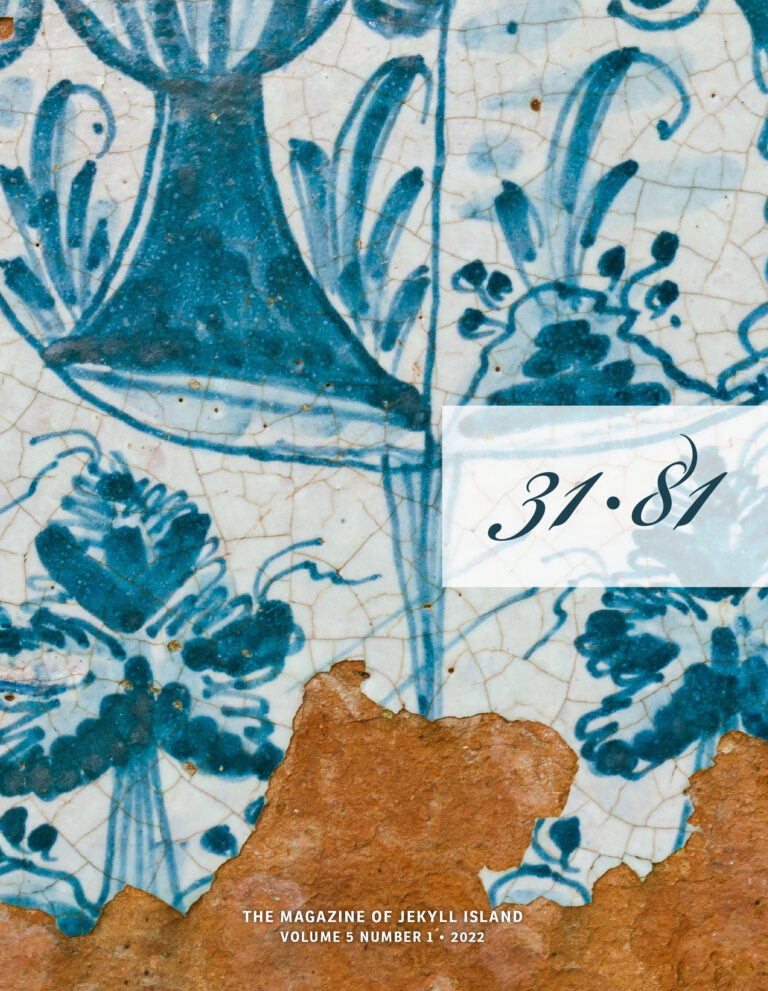Bits of Native American pottery bind us to Jekyll Island’s history
BY JEANÉE LEDOUX
Our crafts help make us human. That’s as true these days—during the pandemic, many people found comfort in new pastimes like knitting, breadmaking, and woodwork—as it was thousands of years ago. Just have a look at the Native American pottery collection at Mosaic, Jekyll Island Museum. The remnants of everyday wares and ceremonial pieces connect us across time to the region’s prehistoric residents.
“Here on Jekyll Island, we have found evidence of Native American pottery use dating back to the late Archaic Period (around 2500–1000 BC),” says Andrea Marroquin, the museum’s curator. The pottery exhibit consists mostly of potsherds (fragments) discovered during local archaeological investigations, routine island maintenance, and even swimming pool excavations. “It can be a challenge to mend sherds together like pieces of a puzzle to determine the original shape,” Marroquin says. One of the museum’s showstoppers is a massive tobacco-colored pot, built and stamped with a linear pattern circa 1350 AD, that has been painstakingly reconstructed.
Even tiny pottery fragments found among the oyster shells and animal bones in coastal Georgia’s numerous middens (prehistoric dump sites) have tales to tell. “Potsherds can be very helpful in dating a site,” Marroquin says. The sherds also signal that a group has settled down in an area, considering pottery is impractical to carry from place to place. Marroquin adds that distinctive patterns and other characteristics of the clay can reveal connections between people in different regions, links like trade routes and intermarriage.
The techniques that Jekyll’s ancient potters employed are still in use today. Craftspeople roll the clay into coils, stack them to form a vessel, then smooth the exterior with rock and water. They add decorations with several different methods, which can include incising lines or pressing a fabric or stamp into the surface. After that, they dry the piece in the sun and bake it in an open fire. They heat it slowly for several hours, then cool it gradually to avoid breakage.
While most of Mosaic’s pottery pieces are rooted in survival—cooking, eating, storage—one stands out for its striking beauty. This tall, chiminea-shaped vessel with concentric circles and waves swirling around its neck is a reproduction of the Swift Creek variety of pottery. Tammy Beane, an Alabama ceramicist who specializes in prehistoric and early historic pottery techniques of the Southeast, gleaned information from a potsherd to make the vessel and a carved wooden paddle used to stamp the pattern on it. (That same special potsherd inspired the museum’s logo.)

The pottery collection at Mosaic, Jekyll Island Museum is just one way to learn about Native American life on the island. Visitors to the museum also can explore a Timucua hut, climb in a dugout canoe, check out tools carved from stone and bone, and peer inside a reproduction of a midden. Guests may even be inspired to think about the kinds of artifacts they’d like to leave behind for future archaeologists pondering life in the 21st century.



